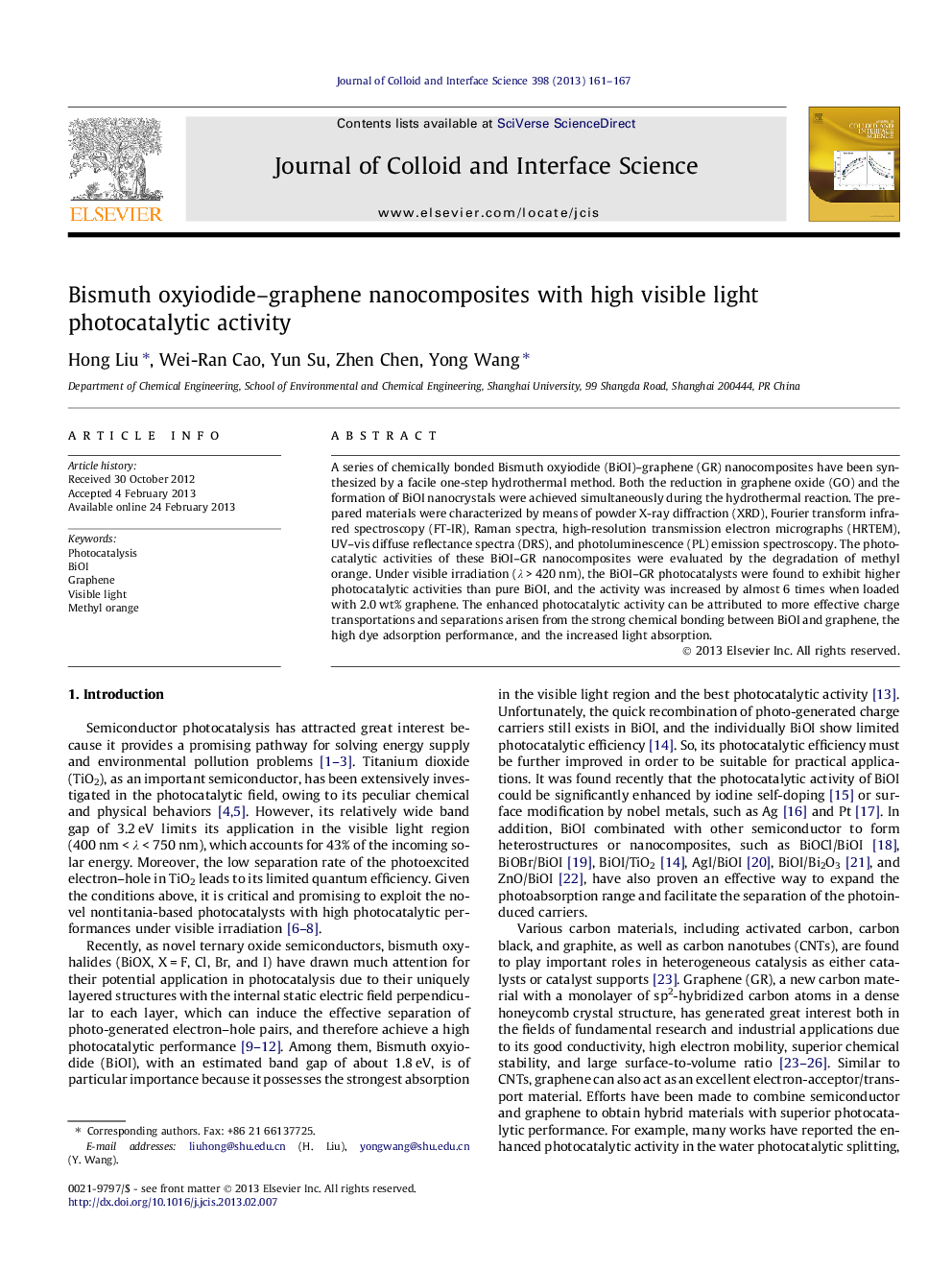| Article ID | Journal | Published Year | Pages | File Type |
|---|---|---|---|---|
| 607880 | Journal of Colloid and Interface Science | 2013 | 7 Pages |
A series of chemically bonded Bismuth oxyiodide (BiOI)–graphene (GR) nanocomposites have been synthesized by a facile one-step hydrothermal method. Both the reduction in graphene oxide (GO) and the formation of BiOI nanocrystals were achieved simultaneously during the hydrothermal reaction. The prepared materials were characterized by means of powder X-ray diffraction (XRD), Fourier transform infrared spectroscopy (FT-IR), Raman spectra, high-resolution transmission electron micrographs (HRTEM), UV–vis diffuse reflectance spectra (DRS), and photoluminescence (PL) emission spectroscopy. The photocatalytic activities of these BiOI–GR nanocomposites were evaluated by the degradation of methyl orange. Under visible irradiation (λ > 420 nm), the BiOI–GR photocatalysts were found to exhibit higher photocatalytic activities than pure BiOI, and the activity was increased by almost 6 times when loaded with 2.0 wt% graphene. The enhanced photocatalytic activity can be attributed to more effective charge transportations and separations arisen from the strong chemical bonding between BiOI and graphene, the high dye adsorption performance, and the increased light absorption.
Graphical abstractFigure optionsDownload full-size imageDownload high-quality image (92 K)Download as PowerPoint slideHighlights► BiOI–graphene nanocomposites have been synthesized. ► Such material exhibited strong spectral response in the visible region. ► Photocatalytic activity of BiOI was greatly enhanced by introduction of graphene. ► Graphene acted as an electron-acceptor to hinder the charge recombination.
